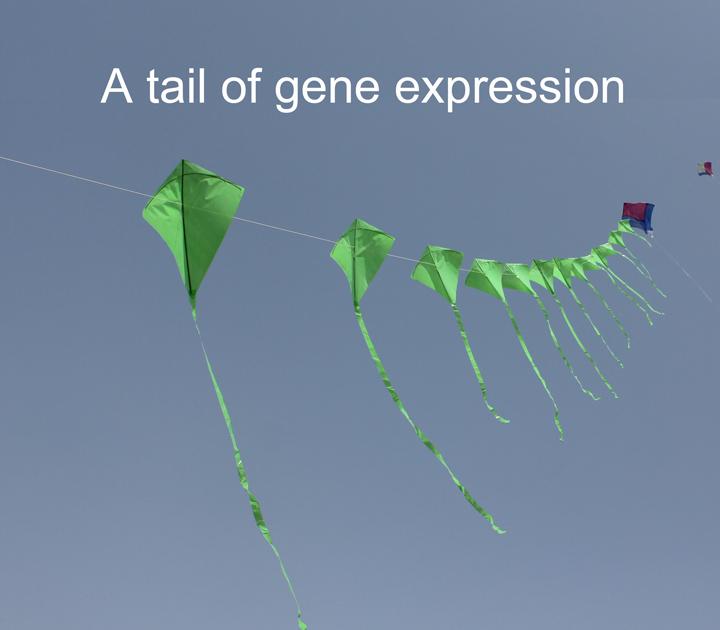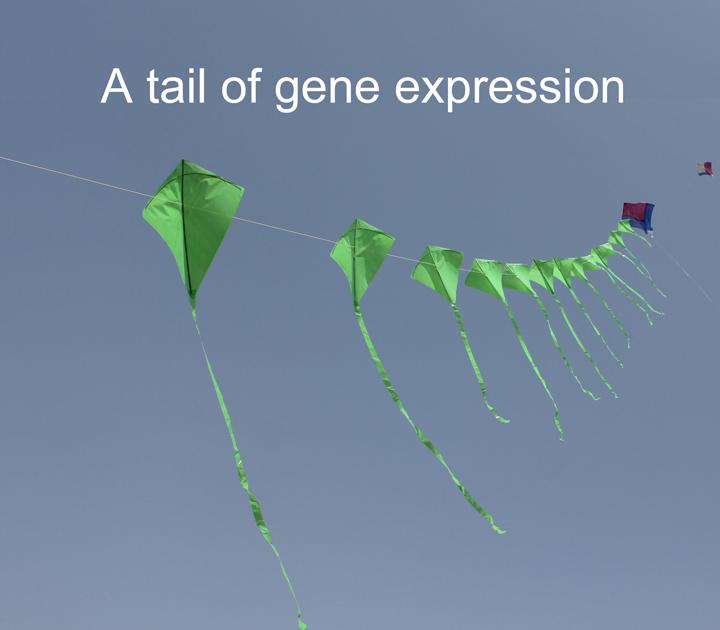
Imagine trying to fly a kite without a tail. It swoops and loops and wiggles and finally crashes down into the ground. A kite without a tail is unstable, but add a tail at the right place, and your kite will fly steady.
Curiously, a similar connection between possessing a tail and being stable exists in molecules within living cells. Messenger molecules that convey instructions from DNA to protein factories for protein synthesis behave somewhat like kites. The messengers require a special tail to stabilise them so that they can function. Variability in the tail — in length or in their position, affects the function of the messenger molecules, and hence influences gene expression.
Now, a team of scientists from the Institute for Stem Cell Biology and Regenerative Medicine (inStem) and the National Centre for Biological Sciences (NCBS) have found that many messenger molecules in the flatworm Schmidtea mediterranea have alternate forms that vary in the lengths and positions of their tails.
This study on S. mediterranea is the first of its kind in flatworm model systems, which, due to their incredible regeneration abilities, provide insights into stem cell regulation, cancer and tissue regeneration. This study could help us understand how changing messenger molecule tails could control gene expression in the context of regeneration.
In a typical cell, the expression of a gene coding for a protein involves two major steps — the coding of a messenger molecule called mRNA from the genetic information in DNA, followed by the translation of the mRNA’s message into protein products at the cell’s protein factories. However, before translation, a process called ‘polyadenylation’ adds tails to mRNAs to stabilise these messengers.
Sometimes, a phenomenon known as ‘alternative polyadenylation’ occurs in cells, through which these tails are added to different positions on mRNAs, thereby influencing their functions.
“We know that alternative polyadenylation is a process by which the same mRNA can be given different tails,” says inStem faculty member Dasaradhi Palakodeti. “And we know that there are specific patterns in the mRNAs that signal for polyadenylation. But we needed to build a computational pipeline to be able to detect such signals reliably,” he continues.
The work has been a collaborative effort between Palakodeti’s group at inStem and Aswin Seshasayee, who is a faculty member at NCBS. Apart from using a host of cutting-edge molecular techniques such as Next Generation Sequencing or NGS, the researchers also had to develop specific bioinformatic tools for analysing large amounts of genomic data.
When searching for a particular pattern in a very large amount of genetic data, the probability of finding such a pattern by pure chance becomes very high. “In order to avoid such false positives, we needed expertise in statistics and bioinformatics, which Aswin Seshasayee and Praveen Anand provided,” continues Palakodeti.
The tools and methods used in the work have been described in a publication in the journal G3:Genes|Genome|Genetics. The authors believe that these tools and methods will lay the foundation for crucial breakthroughs in the flatworm model system and in our understanding of stem cell biology and the process of regeneration.
“One of the most interesting patterns that have emerged from this study is that the same mRNAs with different tails are found in different tissues. Actively regenerating tissues expressing a gene have mRNAs with shorter tails, while mature cells expressing that same gene have mRNAs with longer tails,” says Vairavan Lakshmanan, who is one of the lead authors of the paper that details these findings.
Praveen Anand, another lead author in this study says, “Many studies focus on what protein an mRNA codes for, but very few actually look at the sequences that are beyond these coding regions. Our work is directed at studying, the signals for polyadenylation on a genome scale that can regulate the stability of mRNAs and can impact the localization of mRNAs and translation. And all of this has been developed for the first time in the flatworm model system.”
###
Media Contact
Dasaradhi Palakodeti
[email protected]
Aswin Seshasayee
[email protected]
The post A tail of gene expression appeared first on Scienmag.





